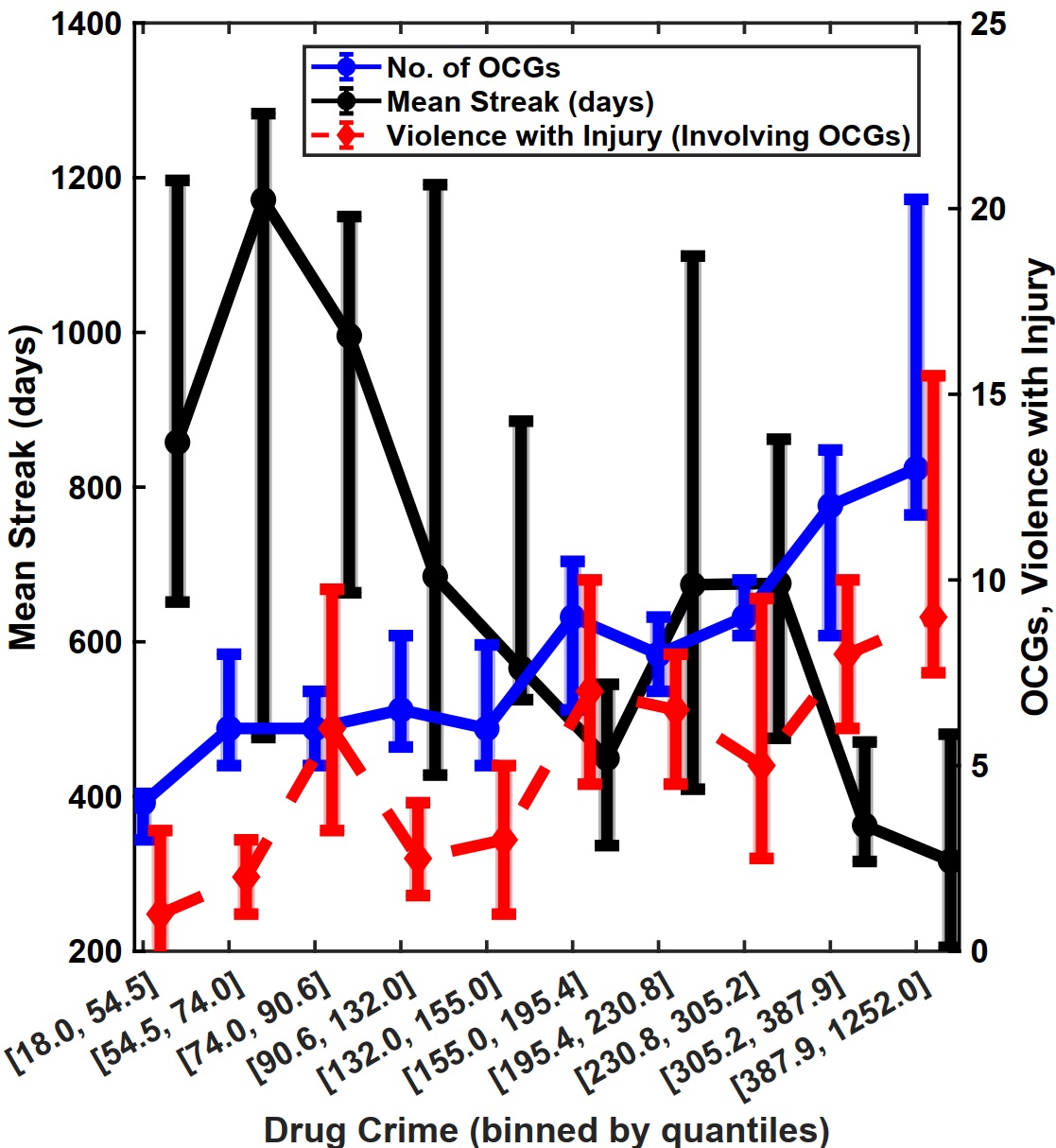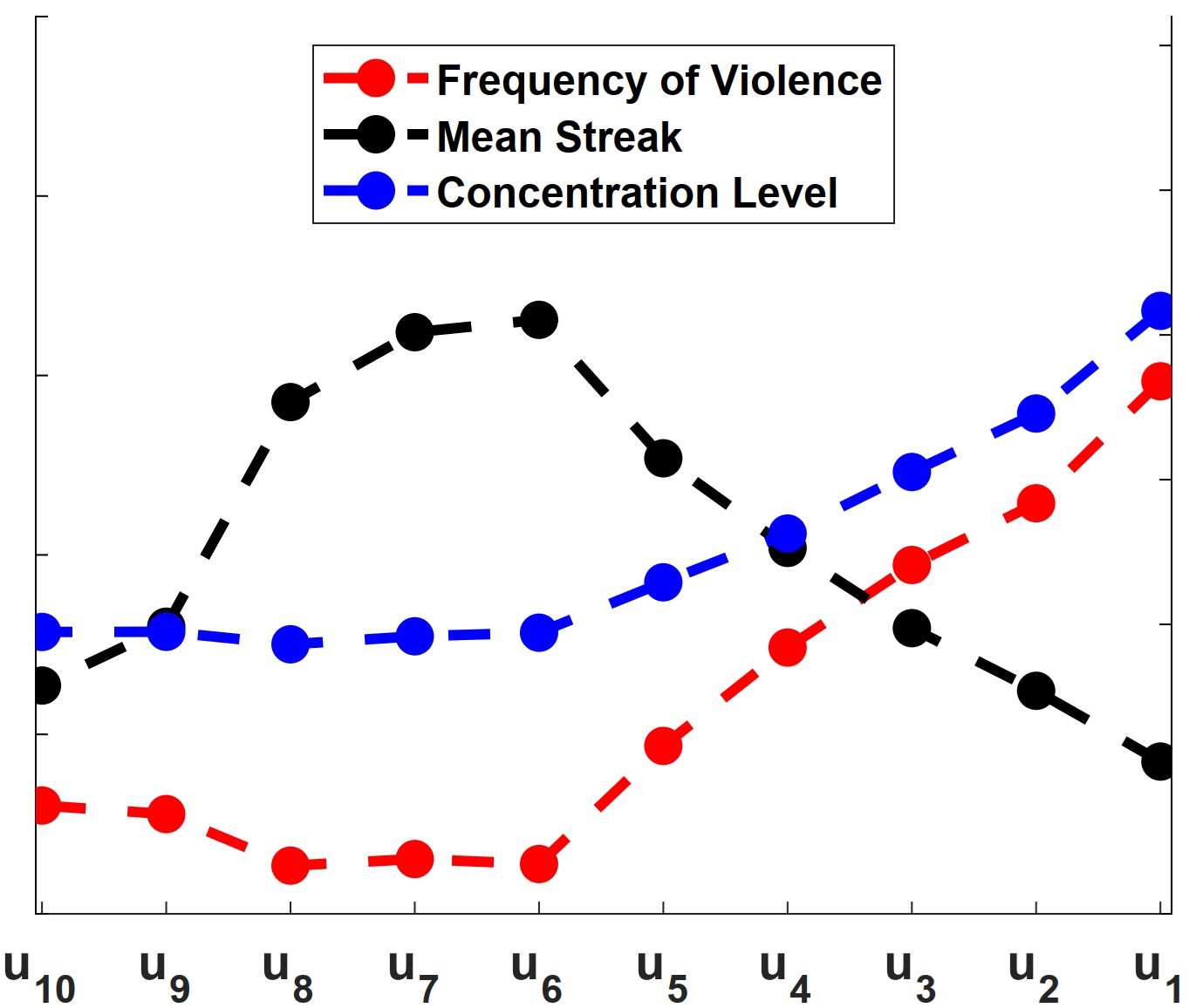Takeovers in Drug Markets
Understanding evidence from a Large Region of UK
No institution grants Organized Criminal Groups (OCGs) the right to possess or control a territory. Nevertheless, sometimes these entities find ways to take control of such areas. Using empirical data from Merseyside, U.K., we document the distribution of OCGs’ violence and territorial control across the region. We find that OCGs’ violence concentrates on the most profitable areas, but surprisingly, no OCG can establish forms of control over those areas. We propose a theoretical model that rationalizes these empirical observations by examining how OCGs strategically select which area to exploit based on profitability and the presence of other OCGs.
Context
Cities all around the world are characterized by the presence of stable drug markets operated by one or multiple organized crime groups (OCGs). Despite a widely observed geotemporal stability, urban drug markets exhibit a wide heterogeneity in the amount of violence recorded in their geographic surroundings, and little is known about the causes of such heterogeneity.
Aims
We review the structure of urban drug markets and OCG-related violence in a large area of U.K, Merseyside (1.4M residents), through a unique dataset containing all OCG-related offenses across years 2015-2018. We aim to supply a theory motivating the observed patterns of drug dealing, violence and turnover between OCGs across areas.
Methodology
We develop a model of rational choice to argue that observed violence (or its absence) may be a consequence of choices taken by OCGs in two parallel dimensions: first, the degree of `crime activism' (i.e. the intensity of search for crime opportunities across the city); second, the pattern of market exploration constructed by each OCG vis-à-vis the pattern picked by (competing) groups. The core of our argument is that for rational OCGs, a trade-off exists between the profitability of a given area and the costs involved with confronting with incumbent OCGs, if any.


Key Findings
- When the cost of exploration is small (for example, because police activity is sporadic), OCGs have a good understanding of the exploration patterns of other groups, and as a result, each OCG ends up controlling a well-defined reference area. Hence, clashes (i.e. violence) between OCGs remains low across the entire city. However, exogeneous shocks reducing the frequency of OCG activity (e.g., a vigorous, yet untargeted police activity in the streets) may induce a spike of violence and the emergence of turf wars between OCGs.
- Importantly, the model unveils a complex relationship between policing and crime across areas. Cities where OCGs are on average more active will jointly feature a more efficient market selection (as measured in terms of OCG turnover across areas) and lower average amounts of violence. On the other hand, cities manifesting a lower level of OCG activity will show more complex selection patterns and profound asymmetries between markets. In particular, the model predicts higher OCG concentration, faster turnaround and higher average level of violence in the high-end segment and a relatively more peaceful and disperse control structure for the medium and low-end segment.
- Empirically, We show that the structure of drug markets of Merseyside conforms to our model predictions in many dimensions. Particularly, areas characterized by high volumes of drug offenses are characterized by higher OCG turnaround and higher levels of violence as compared to medium volume areas, suggesting an entrenchment effect for groups operating in the latter segment.
Implications
- Violence is not necessary a good proxy for OCG activity: lack of violence in an area might signal the establishment of property rights in that area and, a concern for authorities and general public, the presence of an efficient rent extraction technology being put in place by resident OCGs.
- Policies homogeneously targeting crime across a city can lead to asymmetries across areas relative to the observed level of violence and the stability of OCG control.
Future Research
- Our current results pertain the shape of a specific market within a certain temporal snapshot and provide a starting ground for exploring the structure of interconnected markets.
- The notion of market analyzed in this project is horizontal. Hence, in future research it will be important to assess how the relationship between violence and drugs carries over to vertical markets (i.e. supply chains).
Team:
- Dr Roberto Rozzi, Universita' di Siena (roberto.rozzi@unisi.it)
- Dr Andrea Giovannetti, Australian Catholic University (andrea.giovannetti@acu.edu.au)
- Prof Paolo Pin, Universita' di Siena (paolo.pin@unisi.it)
- Prof Paolo Campana, University of Cambridge (pc524@cam.ac.uk)